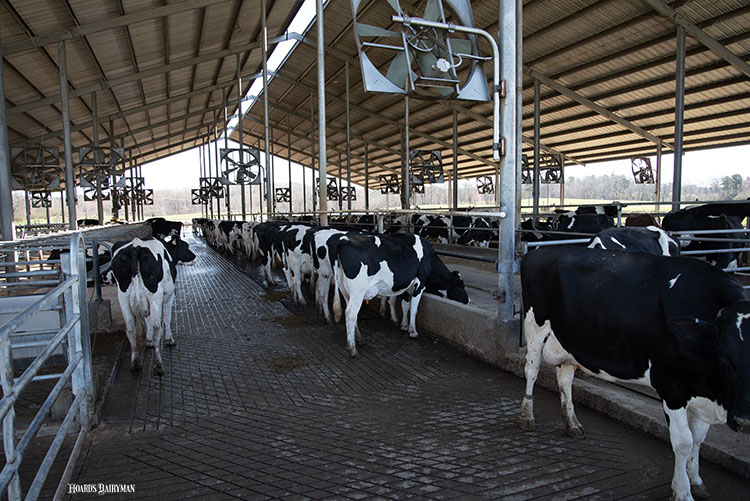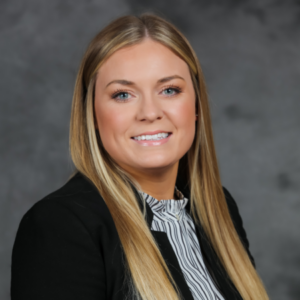NMPF’s chief veterinary officer Meggan Hain explains for listeners of Dairy Radio Now how the FARM program’s Animal Care component is in the process of implementing the latest set of industry care standards, and how NMPF is organizing outreach and education sessions across the producer community to help facilitate the uptake of the program.
Tag: animal care
FARM Program Updates Animal Care Standards
NMPF’s Senior Director of FARM Animal Care, Beverly Hampton Phifer, tells Dairy Radio Now listeners about the series of changes being implemented this summer to the FARM Animal Care program. The program is now initiating its 5th version, featuring updates to its standards that reflect best practices for dairy cattle. The FARM program is also updating its newer, voluntary environmental and farm worker programs as those areas continues to draw attention from customer and consumers.
NMPF’s Bjerga on H5N1, Farm Bill
NMPF Executive Vice President for Communications & Industry Relations Alan Bjerga speaks on RFD-TV about dairy farmer challenges and their broader relationship with agriculture, ranging from H5N1 in dairy cattle to discussions of the 2024 Farm Bill in Washington. Success across all fronts will require communication and collaboration across agricultural sectors, he said. Meanwhile, NMPF is optimistic regarding the future of milk pricing, with a USDA plan on Federal Milk Marketing Order modernization expected within the next few weeks.
https://www.rfdtv.com/from-farm-bill-to-hpai-what-is-dairy-farmer-sentiment-looking-like
NMPF Awarded USDA Grants to Advance Dairy Industry Disease Preparedness
The National Milk Producers Federation (NMPF) today was awarded funding from the U.S. Department of Agriculture’s (USDA) Animal and Plant Health Inspection Service National Animal Disease Preparedness and Response Program (NADPRP) supporting two projects advancing dairy cattle disease preparedness.
The first award will expand on USDA funding NMPF received in 2021 to build the National Dairy Farmers Assuring Responsible Management (FARM)Biosecurity Program. FARM Biosecurity provides dairy farmers with the tools to protect the health of their herds and employees from everyday and foreign animal diseases. Biosecurity resources developed from the initial 2021 USDA funding are currently being used to respond to the H5N1 animal health issue. This new funding will expand educational resources and training opportunities for producers, cooperatives, state animal health officials and FARM Program evaluators; update the Secure Milk Supply Plan guidance and further develop the capabilities of the FARM Biosecurity database.
The second award will bring together stakeholders including dairy cooperatives, milk haulers, milk testing labs, state and federal animal health officials and National Animal Health Laboratory Network (NAHLN) lab directors to conduct a gap analysis and create a report outlining current capabilities and guidance for industry and policymakers to implement a foot-and-mouth disease diagnostic assay using bulk tank milk samples to provide herd-level disease surveillance in the event of an outbreak.
“USDA funding for continued enhancement of biosecurity on dairy farms for emerging and foreign animal diseases arrives at a time when the dairy industry is already using USDA-funded resources to address the challenges of H5N1,” Gregg Doud, president and CEO of NMPF, said. “This ongoing collaboration between USDA and NMPF is building resiliency for the U.S. dairy industry now and for the future.”
The grants are funded by the 2018 Farm Bill as part of an overall strategy to help prevent animal pests and diseases from entering the United States and reduce the spread and impact of potential disease incursions through advance planning and preparedness. USDA has funded the NADPRP projects with the goal of individually and collectively addressing critical livestock biosecurity, large-scale depopulation and carcass disposal concerns in all major livestock industries across all U.S. regions. NMPF will apply the grant funding to advance biosecurity and diagnostic testing capabilities to support animal health on dairy farms by partnering with stakeholders and experts, including dairy farmers, veterinarians, dairy cooperatives and processors, NAHLN laboratories, Preventalytics LLC, and state and federal animal health officials.
NMPF’s Yeiser Stepp Talks Biosecurity Best Practices
Emily Yeiser Stepp, Executive Director of the National Dairy Farmers Assuring Responsible Management (FARM) Program, discusses best practices in biosecurity as dairy farmers navigating a new federal order on testing and interstate animal movement in an interview with the National Association of Farm Broadcasters. “We still don’t know a lot about this virus and are taking action to limit that risk of virus spread, not only to protect our own dairy herds but also those poultry facilities that are being impacted, as well as protecting our dairy workers,” Yeiser Stepp said.
NMPF’s Doud Discusses HPAI, FMMO Modernization
NMPF President & CEO Gregg Doud discusses dairy’s response to Highly Pathogenic Avian Influenza (HPAI), the path forward for Federal Milk Marketing Order Modernization through an approach that puts farmers first, and opportunities for dairy in global markets. Doud spoke in an interview with the Agriculture of America podcast.
Douglass, an NMPF Young Cooperator, Discusses Dairy Leadership
Sarah Douglass, a northeast Ohio dairy farmer and an NMPF Young Cooperator, talks about the crucial issues facing younger farmers and the importance of training the next generation of dairy leaders, in an interview with RFD-TV. Douglass spoke at NMPF’s annual meeting in Orlando, which features two days of programming specifically directed at younger dairy leaders.
Version 5 Furthers FARM Animal Care Standards
 By Beverly Hampton Pfifer, Senior Director, FARM Animal Care
By Beverly Hampton Pfifer, Senior Director, FARM Animal Care
The National Dairy FARM Program has evolved over the years to become a rigorous on-farm quality assurance program and trusted industry risk mitigation tool that gives the supply chain the confidence it needs to enthusiastically support dairy despite activist pressure and misinformation. Soon-to-come updates to FARM Animal Care are designed to strengthen that assurance, spotlighting dairy farmers’ stewardship of their herds and leadership in best practices.
The return on investment the FARM Program offers dairy comes from the value dairy wholesalers and retailers find in it, proving the great work dairy farmers are doing while identifying those in need of mild to major corrective action. From January 1, 2020, to July 1, 2023, 72% of the U.S. dairy industry was evaluated under FARM Animal Care Version 4. FARM captures farmers’ excellence within cow Animal Care evaluation questions, which illustrate high standards and continuous improvement. Examples include 96% compliance with body condition standards, 94% compliance with locomotion scores, and 94% and above compliance on focus areas of calf care, non-ambulatory animals, euthanasia, and fitness to transport decisions.
These results give the dairy industry verifiable data to elevate supply chain confidence. That’s also why it’s important for program expectations to remain current and relevant. Over the past two and a half years, the FARM Program has worked closely with more than 85 individual farmers serving on governing committees as well as numerous veterinarians, cooperative and processor staff, and animal scientists to review more than 300 comments submitted during a six-week public comment period to ensure that the Animal Care standards are supported by the latest dairy industry science and offer appropriate and useful best management practices for producers on all types of dairies. The resulting Animal Care Version 5 standards, approved by the National Milk Producers Federation (NMPF) board of directors in June, make small refinements that aid in the industry’s commitment to continuous improvement.

Changes captured in FARM Animal Care Version 5, which goes into effect July 1, 2024, include:
Locomotion
Current standard: At least 95% of the lactating herd scores 2 or less on the FARM locomotion scorecard.
Version 5 standard: Maintain the above standard and add that 85% or more of the lactating herd scores 1 or less on the FARM locomotion scorecard.
Pain mitigation for disbudding
Current standard: Pain mitigation for disbudding is provided.
Version 5 standard: Maintain the above standard, but the timeline for correction, if the standard is not met, has been shortened from three years to a maximum of nine months.
Disbudding method
Current standard: *None specified*
Version 5 standard: Calves should be disbudded with caustic paste or cautery.
Colostrum feeding
Current standard: Preweaned calf protocols and practices must demonstrate that preweaned calves are provided sufficient quality and quantity of colostrum or a colostrum replacer within six hours after birth, even if immediately transported off the farm.
Version 5 standard: Maintain the above standard with more clearly defined expectations. Preweaned calf protocols and practices must demonstrate that preweaned calves are provided sufficient quality (such as by visual observation or a colostrometer), and quantity of colostrum or a colostrum replacer (10% of birth weight) or there must be evidence of successful transfer of passive immunity within six hours after birth, even if immediately transported off the farm.
Continuing education
Current standard: There is job-specific continuing education for nonfamily employees with animal care responsibilities in stockmanship/handling, preweaned calf care, nonambulatory animals, euthanasia, and determining animals that are fit for transport.
Version 5 standard: Maintain the above standard, but the timeline for correction if the standard is not met has been shortened from three years to a maximum of nine months.
Euthanasia
Current standard: Euthanasia protocols and practices identify a primary and secondary individual for euthanasia implementation.
New standard in Version 5: Euthanasia protocols and practices demonstrate the method of confirmation of death.
For more details about the National Dairy FARM Program or the upcoming Animal Care Version 5 standards, visit nationaldairyfarm.com.
This column originally appeared in Hoard’s Dairyman Intel on August 21, 2023.
Beef or dairy, consumers care about calf care
By Beverly Hampton Pfifer, Director, FARM Animal Care.
Increasingly, dairy herds are being built with beef in mind. While that changes supply chains, it doesn’t change the need for quality calf care.
To that end, there’s a paradigm shift taking place on U.S. dairy farms. The National Association of Animal Breeders (NAAB) reports that since 2016, U.S. dairy semen sales dropped by 5.3 million units to settle at 17.1 million units. On the flip side, beef semen sales climbed from 2016’s 2.5 million units to reach 8.7 million units in 2021. That’s a 6.2 million-unit shift in a six-year window.
Due to the beef sector’s use of natural insemination and the fact that national dairy herd numbers have remained relatively steady over the past decade, it’s largely assumed that up to 5 million dairy-influenced animals are now entering the beef supply chain annually, though publicly available data related to beef processing by breed is limited.
That’s just the start of the shift in the dairy-beef narrative. A growing number of farm and ranch operations are being used solely for rearing of these crossbred animals, in addition to off-site calf rearing for dairy replacement heifers, creating an entirely new sector of animal production.
Over the years, we have learned that where there is supply chain traceability, dairy and beef customers expect risk mitigation through quality assurance programs. And while the National Dairy Farmers Assuring Responsible Management (FARM) Program framework is structured for farms with lactating dairy animals, the program recognizes the role of this new calf-rearing sector within the greater dairy and beef supply — and the need for the same quality assurance. Ensuring exceptional management and care of calves — regardless of their genetics — is critical to the future of the U.S. dairy industry.
Establishing a framework that’s useful to farmers and ranchers while providing assurances to both dairy and beef supply chains isn’t easy. The Calf Care & Quality Assurance Program (CCQA) is a joint effort led by the FARM Program and National Beef Quality Assurance Program with support from the Dairy Calf and Heifer Association and Veal Quality Assurance. With input from a technical task force of calf producers, veterinarians, and academics, CCQA maintains a unified set of standards, provides training resources for employees, and through an audit tool coming later this year, also provides quality assurance to the dairy and beef supply chain.
CCQA largely formalizes the existing standard of care for calves already occurring on farms and ranches across the United States. This ranges from calf health priorities to animal handling and stockmanship best practices to management and care practices. For dairy farms already participating in the FARM program, the CCQA caretaker course provides continuing education for calf care and earns the farms a CCQA/FARM equivalency certification. Employee training and continuing education are key components of quality animal care. Some best practices from each of the main CCQA categories are:
- Calf Health: Veterinarian-Client-Patient Relationship
Veterinarians are key assets on successful calf-rearing operations. In addition to helping establish and maintain a health management plan and advising medical cases, veterinarians can serve as a training resource and assist in determining gaps in management or protocol drift.
- Animal handling, stockmanship, and training
Handling and facility design should prioritize low stress handling techniques. This is not only important for reducing calf stress, but it can also improve safety for staff. A zero-tolerance policy for unacceptable handling must be in place, and best practice for all management practices should be reinforced through training of those with animal care responsibilities.
- Management and care
It is recommended that calves be provided with a high-quality colostrum measuring 10% of the calf’s body weight within six hours of birth. Additionally, calves fed 20% of their birth weight, or at least eight quarts of milk daily, are shown to have high levels of gain and increased immune system function. Young calves should be provided access to fresh drinking water and palatable grain.
Calf housing should be designed to protect animals from weather conditions. This includes a sufficient quantity of dry bedding, ventilation, and lighting with consideration given to allowing calves to have the opportunity for visual contact with other calves.
For the complete list of CCQA standards and priorities, check out the CCQA Reference Manual. Dairy farms and calf raising facilities curious about program participation, CCQA caretaker training, protocol templates, or other resources should visit the FARM Program Resource Library or the CCQA website.
This column originally appeared in Hoard’s Dairyman Intel on March 6, 2023.
Scholarships give back to dairy, NMPF’s Ayache says
The National Dairy Leadership Scholarship Program supports dairy research — and the industry as a whole — by assisting students who do cutting-edge scholarship, and then stay within the sector, said Nicole Ayache, National Milk Producers Federation Vice President, Environmental Stewardship and Sustainability, in an interview with the National Association of Farm Broadcasters. “We’re really trying to support those individuals and their career. We want them to stay within dairy and contribute to our community,” she said. More information on the scholarships and how to donate to them is here.
Biosecurity Critical to Dairy Every Day
By Miquela Hanselman, Regulatory Affairs Manager, NMPF.
 In the winter months, people often take extra precautions against illnesses like the flu or the common cold because they understand the benefits of staying healthy. Every farmer knows that simple on-farm actions help keep animals healthy. But routine best practices — as well as enhanced ones that are especially important in a world of animal disease outbreaks that destroy markets as well as herds—are critical to keep top-of-mind as farmers strive to have healthy animals, healthy employees, and a healthy dairy economy.
In the winter months, people often take extra precautions against illnesses like the flu or the common cold because they understand the benefits of staying healthy. Every farmer knows that simple on-farm actions help keep animals healthy. But routine best practices — as well as enhanced ones that are especially important in a world of animal disease outbreaks that destroy markets as well as herds—are critical to keep top-of-mind as farmers strive to have healthy animals, healthy employees, and a healthy dairy economy.
That’s why the National Dairy Farmers Assuring Responsible Management (FARM) Program created the first Everyday Biosecurity Manual. Biosecurity is the newest FARM Program area, beginning in 2021 through funding from USDA’s National Animal Disease Preparedness and Response Program. It focuses on increasing awareness of biosecurity throughout the dairy industry by providing practical and effective steps to further promote cattle health. This voluntary program complements the animal health and husbandry recommendations included in the FARM Animal Care, Drug Residue Prevention, and Environmental Stewardship programs.
Seven areas to protect health
The Everyday Biosecurity Manual outlines small, routine steps dairy farmers can take to protect herd and employee health through seven areas — animal health and disease monitoring, animal movements and contact, animal products, vehicles and equipment, personnel, cleaning and disinfection, and a line of separation. Putting everyday biosecurity measures in place can prevent the introduction, detect the presence, and contain the spread of diseases among both cattle and people. Everyday biosecurity practices protect against common diseases like contagious mastitis, respiratory infections, and scours. With effective everyday biosecurity steps, farmers can prevent or lessen the impact of these diseases on their cattle.
Biosecurity is a multistep process. Along with everyday measures, producers also need enhanced biosecurity to protect cattle from highly contagious foreign animal diseases such as foot-and-mouth disease (FMD). FARM Biosecurity also complements the Secure Milk Supply (SMS) Plan for Continuity of Business during an FMD outbreak, which includes enhanced biosecurity recommendations. The FARM Biosecurity program aligns everyday steps with these enhanced steps to ensure producers have the right tools to protect their cattle from common or high-consequence diseases.
The SMS Plan was developed in collaboration with industry representatives, state and federal animal health officials, and academic partners with USDA funding beginning in 2009. In an FMD outbreak, dairy farms located in a regulatory control area would need a movement permit issued by the state to ship cattle, semen, embryos, and possibly raw milk. The FARM Biosecurity Program is also developing an online option for producers, their veterinarian, and their FARM evaluator to create an enhanced biosecurity plan ahead of an outbreak. Once put in place, cattle will be better protected against FMD, and producers will be better positioned to meet the biosecurity movement permit requirement to move their cattle and products during an FAD outbreak.
Good biosecurity takes time and practice to be effective. Making these practices routine — or reinforcing the best management practices in the Everyday Biosecurity Manual — can help protect animals from all kinds of diseases. This ultimately moves the industry one step closer to protecting cattle and the U.S. milk supply. Visit nationaldairyfarm.com/farm-biosecurity/ for more information.
This column originally appeared in Hoard’s Dairyman Intel on Dec. 12, 2022.
NMPF Urges Sped-Up FDA Approval of Climate Friendly Feed Additives
ARLINGTON, VA — NMPF called on the U.S. Food and Drug Administration to use existing legal authority to modernize its regulations allowing for faster approval of animal-feed additives that reduce greenhouse gas emissions, submitting comments to the agency today that highlighted the need for urgent action to enhance dairy’s role as a climate solution.
“Innovative and voluntary solutions are needed to reduce greenhouse gas (GHG) emissions, including methane,” said Dr. Jamie Jonker, NMPF’s chief science officer, in the comments submitted today. “Enteric emissions directly from cows currently account for roughly one third of all GHG emissions from dairy farms and present an important area of opportunity for methane reductions. Feed composition changes can directly or indirectly reduce enteric emissions resulting from livestock.”
While animal-feed additives are a promising path toward a net-zero future for dairy as outlined in industry goals, the pace of their approval lags that of competitors such as the European Union due to current FDA processes. By streamlining bureaucracy and allowing feed-additives to be treated as foods rather than as drugs, the United States can maintain and advance its global leadership in sustainability, Jonker wrote.
Through the U.S. Dairy Net Zero Initiative, a collaboration across dairy organizations, dairy-farm research is advancing new technology and new market development opportunities to make sustainability practices more accessible and affordable to farms of all sizes, including enteric methane reduction.
“One of the greatest opportunities that exists for U.S. dairy farmers is their ability to provide real solutions to many of today’s biggest environmental challenges like GHG emissions,” Jonker wrote. “Embracing new practices and technologies is key to making America’s dairy farmers an environmental solution while providing wholesome and nutritious dairy products to the U.S. and the world.”
For more on how dairy is advancing its stewardship and best practices, visit the National Dairy FARM (Farmers Assuring Responsible Management) Program’s Environmental Stewardship page.





